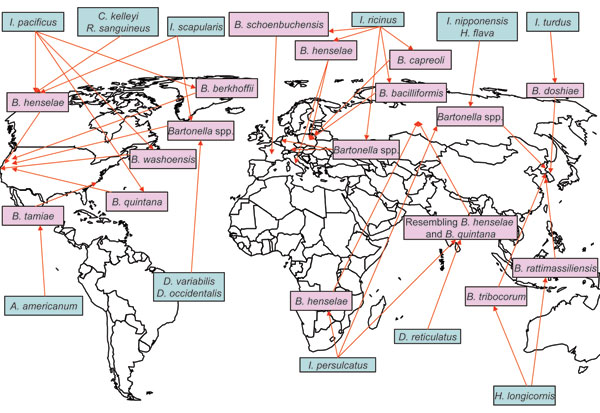Volume 16, Number 3—March 2010
Perspective
Potential for Tick-borne Bartonelloses
Figure

Figure. Worldwide locations of ticks (blue boxes) identified with Bartonella spp. (pink boxes). I., ixodes; C., Carios; R., Rhipicephalus; B., Bartonella; H., Haemaphysalis; A., Amblyomma; D., Dermacentor.
Page created: December 14, 2010
Page updated: December 14, 2010
Page reviewed: December 14, 2010
The conclusions, findings, and opinions expressed by authors contributing to this journal do not necessarily reflect the official position of the U.S. Department of Health and Human Services, the Public Health Service, the Centers for Disease Control and Prevention, or the authors' affiliated institutions. Use of trade names is for identification only and does not imply endorsement by any of the groups named above.